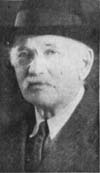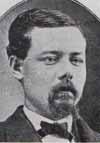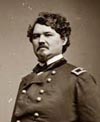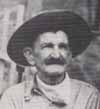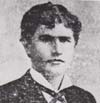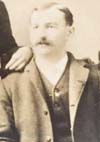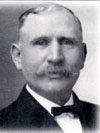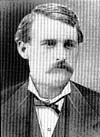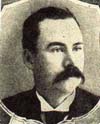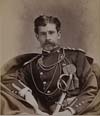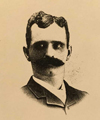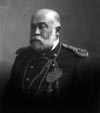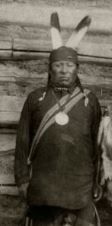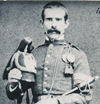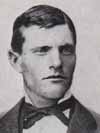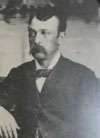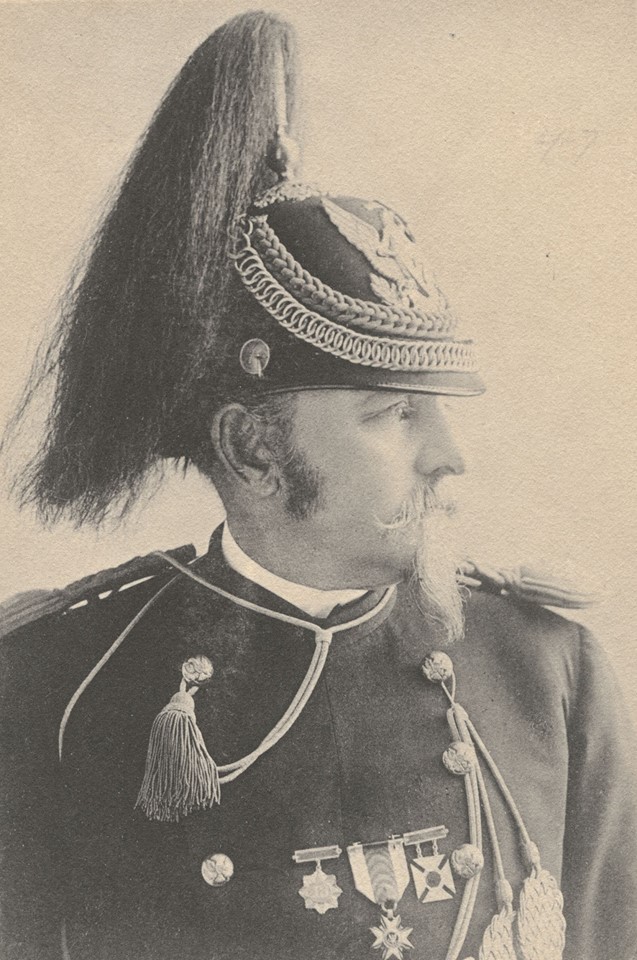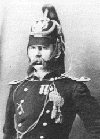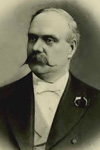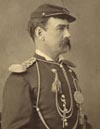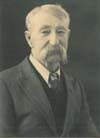Morris Mason Farrar was born on July 30, 1846, in Amesbury, Massachusetts. He was a Private in Company E who participated in the hilltop fight.
James Wilbur Darcy, who was also known as James Wilber, was born on August 2, 1849, in Laurel, Maryland. He was a Private in Company M who participated in the valley and hilltop fights during the battle. He was wounded in his left leg on June 26, 1876.
Jacob Hetler (left) was born in Mansfield, Ohio, on August 2, 1852 (gravestone has 1851). He was a Private in Company D who was wounded during the hilltop fight.
Alexander Downing (right) died on August 2, 1884, in Newton Township, Miami County, Ohio, and was buried in the Pleasant Hill Cemetery there. He was a Private in Company F who was not present at the battle due to detached service at Fort Lincoln.
Charles W. Campbell died in Fort Bayard, New Mexico, on August 2, 1906. He was a Private in Company G who was with the pack train and was wounded in his right shoulder during the hilltop fight. According to his descendants, he wanted his remains to be shipped to Nauvoo, Hancock County, Illinois, and placed in a vault. No record of his remains being in Illinois could be found.
William Earl Smith was born on August 3, 1853, in Rouses Point, New York. He was a Private in Company D who participated in the hilltop fight.
James Akers died in Washington, D.C., on August 3, 1881, and was buried in the Soldiers’ Home National Cemetery there. He was a Corporal in Company G who participated in the valley and hilltop fights.
Charles Stillman Ilsley (left) was born on August 4, 1836, in Maine. He was a Captain for Company E who was not present at the battle due to detached service at Fort Leavenworth, Kansas.
Thomas Murray died at the Soldiers’ Home in Washington, D.C., on August 4, 1888, and was buried in the National Cemetery there. He was a Sergeant with Company B who was with the pack train and participated in the hilltop fight where he was wounded. He was awarded the Medal of Honor for his efforts to bring up the pack train and distribute rations during the battle.
Gabriel Guessbacher died on August 4, 1916, in Warwick, North Dakota, and was buried there in the Warwick Cemetery. He was a Private in Company I who was not present at the battle due to detached service at Powder River, Montana. According to The Bismarck Tribune, he later claimed to be “one of the few who escaped the Custer massacre.”
James M. Rooney (left) died on August 5, 1918, in Yankton, South Dakota, and was buried in the State Hospital Cemetery there. He was a Private with Company F who was with the pack train and participated in the hilltop fight. See 7th Cavalry Troopers in South Dakota.
Henry Nicholaus Peter Witt died in Santa Monica, California, on August 5, 1929. He was a Private for Company K who was not present due to detached service at the Powder River, Montana.
